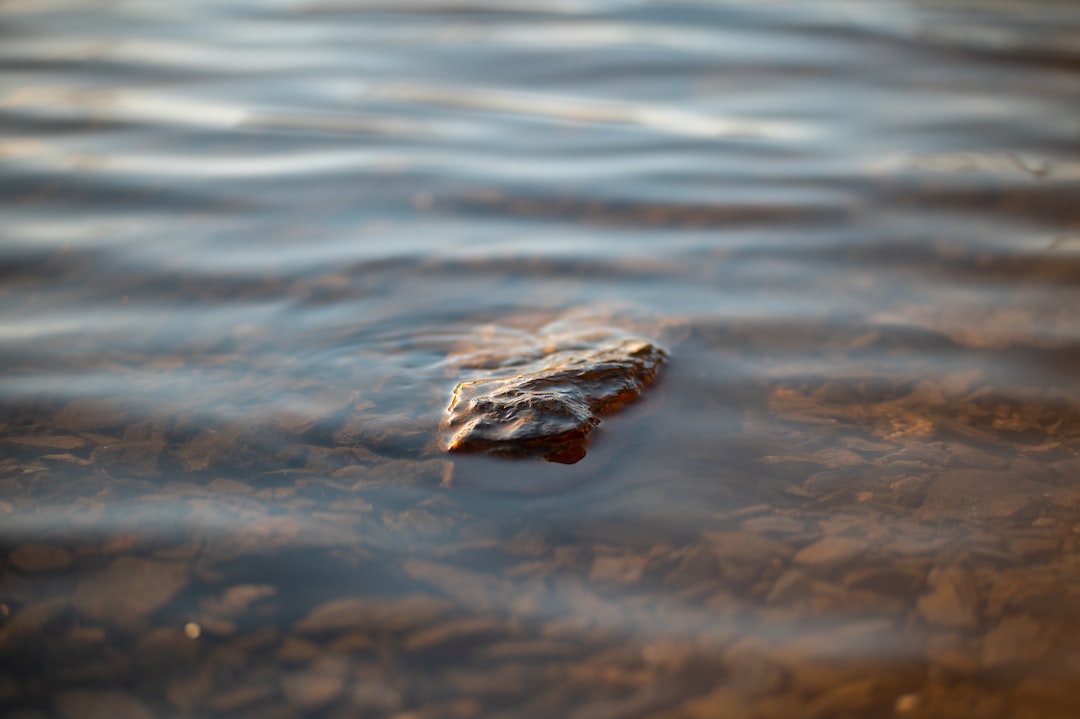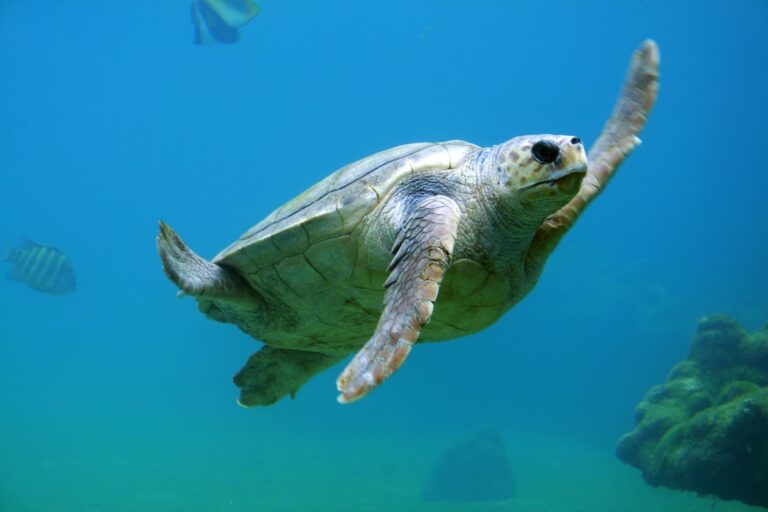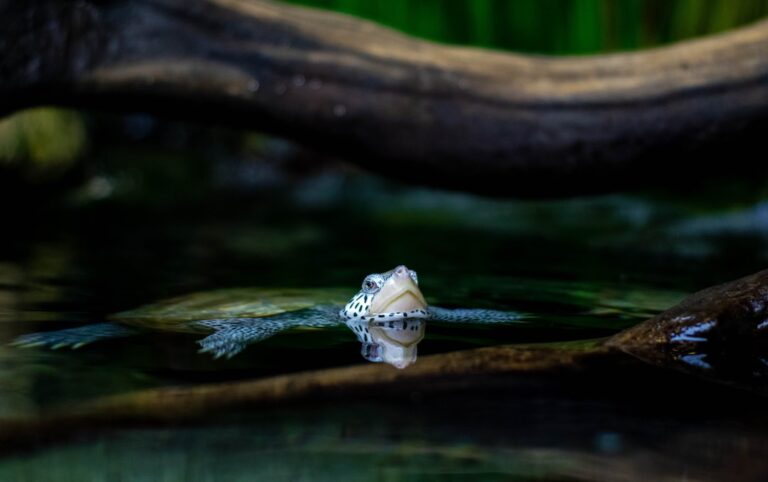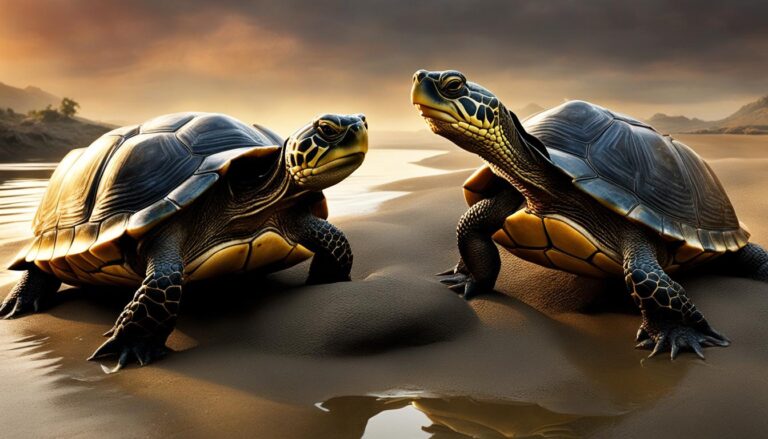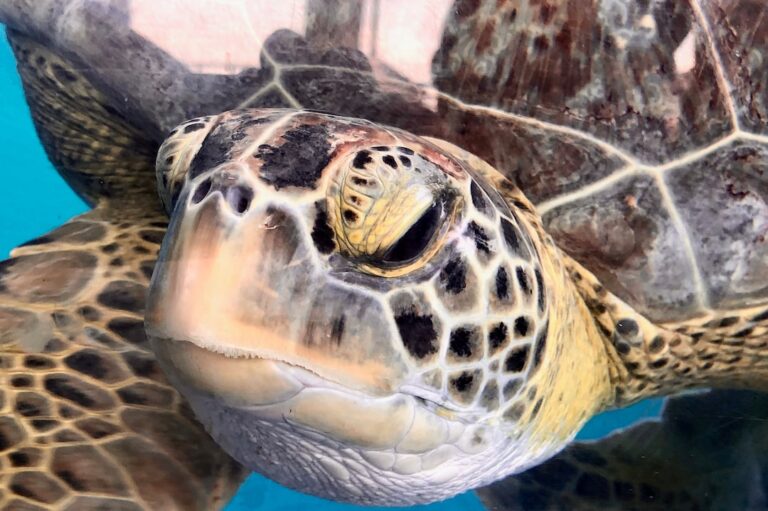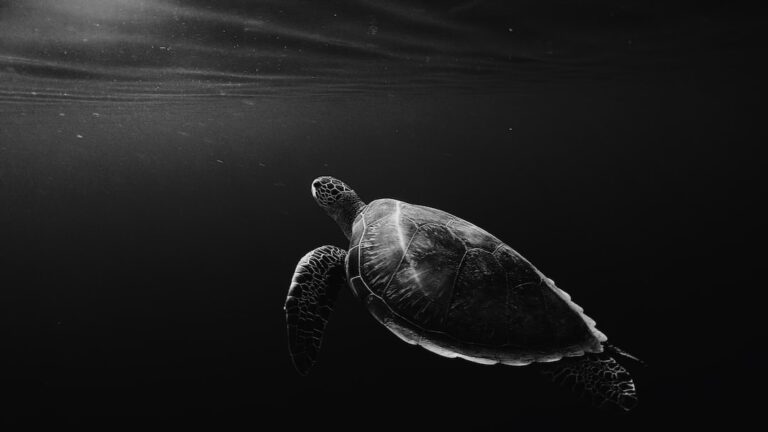Why Do Turtles Die?
Turtles are one of the oldest living reptile groups, with a history that dates back over 200 million years. However, despite their resilience and longevity, turtle populations around the world are facing numerous threats that are pushing them towards extinction. The current state of turtle populations is a cause for concern, as many species are experiencing significant declines.
Turtles play a crucial role in ecosystems as both predators and prey. They help control populations of invertebrates and small vertebrates, and their eggs provide a valuable food source for other animals. Additionally, turtles contribute to nutrient cycling by consuming dead organic matter and distributing nutrients throughout their habitats. Their presence in aquatic ecosystems also helps maintain water quality by stirring up sediment and promoting oxygenation.
Table of Contents
Natural causes of turtle mortality
While turtles have natural predators such as birds, mammals, and larger reptiles, they have evolved various defense mechanisms to protect themselves. However, predation is still a significant cause of turtle mortality, especially for hatchlings and juveniles. Many turtle species lay large clutches of eggs to compensate for the high mortality rates.
Disease is another natural factor that can impact turtle populations. Turtles can be susceptible to various diseases caused by bacteria, viruses, fungi, and parasites. These diseases can affect their overall health, immune system, and reproductive capabilities. In some cases, disease outbreaks can lead to mass mortality events.
Natural disasters such as hurricanes, floods, and wildfires can also have devastating effects on turtle populations. These events can destroy nesting sites, wash away eggs or hatchlings, and disrupt the overall balance of ecosystems that turtles rely on for survival.
Man-made factors affecting turtle survival
While natural causes of mortality are a part of the natural balance of ecosystems, man-made factors have become increasingly significant threats to turtle survival. These factors include habitat destruction and fragmentation, climate change, pollution, overfishing and bycatch, and hunting and poaching.
Habitat destruction and fragmentation are major threats to turtle populations worldwide. The conversion of natural habitats for agriculture, urban development, and infrastructure projects has resulted in the loss of critical nesting sites and foraging areas. Fragmentation of habitats also isolates turtle populations, making it difficult for them to find mates and maintain genetic diversity.
Climate change is another significant factor affecting turtle survival. Rising temperatures can impact the sex ratios of turtle populations, as the sex of many species is determined by temperature during incubation. Warmer temperatures can lead to a skewed sex ratio, with more females being produced than males. Additionally, sea level rise can inundate nesting sites, making them unsuitable for egg laying.
Pollution, including plastic pollution, chemical pollution, and oil spills, poses a serious threat to turtles. Turtles often mistake plastic debris for food and can suffer from ingestion or entanglement. Chemical pollutants can accumulate in their bodies and affect their health and reproductive capabilities. Oil spills can have immediate and long-term impacts on turtle populations, as they can suffocate or become coated in oil, impairing their ability to swim or feed.
Overfishing and bycatch are major threats to marine turtle populations. Turtles often get caught in fishing gear such as nets and longlines intended for other species. This bycatch can result in injury or death for turtles. Additionally, overfishing depletes the food sources that turtles rely on, leading to starvation and population declines.
Hunting and poaching of turtles for their meat, shells, eggs, and other body parts is a significant threat to many turtle species. The demand for turtle products in traditional medicine, food markets, and the pet trade drives illegal hunting and poaching activities. These activities not only directly impact turtle populations but also disrupt the balance of ecosystems that rely on turtles.
Habitat destruction and fragmentation
Habitat destruction and fragmentation are among the most significant threats to turtle populations worldwide. The conversion of natural habitats for agriculture, urban development, and infrastructure projects has resulted in the loss of critical nesting sites and foraging areas. This loss of habitat has a direct impact on turtle populations, as they rely on specific habitats for breeding, feeding, and shelter.
The destruction of nesting sites is particularly detrimental to turtle populations. Many turtle species have specific requirements for their nesting sites, such as sandy beaches or riverbanks with suitable temperature and moisture conditions. When these nesting sites are destroyed or altered, turtles may be unable to find suitable locations to lay their eggs, leading to a decline in population numbers.
Habitat fragmentation also poses a significant threat to turtle survival. Fragmentation occurs when natural habitats are divided into smaller, isolated patches by human activities such as roads, agriculture, or urban development. This fragmentation can isolate turtle populations, making it difficult for them to find mates and maintain genetic diversity. It can also increase the risk of predation and reduce access to food sources.
Preserving and restoring turtle habitats is crucial for their survival. Efforts should focus on protecting nesting sites, restoring degraded habitats, and creating wildlife corridors to connect fragmented habitats. These measures can help maintain healthy turtle populations and ensure their long-term survival.
Climate change and its impact on turtles
Climate change is a significant threat to turtle populations around the world. Rising temperatures can have various impacts on turtles, including changes in sex ratios, altered nesting behaviors, and shifts in distribution patterns.
The sex of many turtle species is determined by temperature during incubation. Warmer temperatures can lead to a skewed sex ratio, with more females being produced than males. This imbalance can have long-term consequences for population viability if there are not enough males available for successful reproduction.
Rising temperatures can also affect the timing and location of turtle nesting behaviors. Some species may alter their nesting behaviors, such as nesting earlier or seeking cooler nesting sites, to adapt to changing environmental conditions. However, these behavioral changes may not always be successful, and turtles may struggle to find suitable nesting sites or encounter increased competition for limited resources.
Sea level rise is another consequence of climate change that can impact turtle populations. Rising sea levels can inundate nesting sites, making them unsuitable for egg laying. This loss of nesting habitat can lead to declines in turtle populations, as they are unable to reproduce successfully. Additionally, sea level rise can also result in the loss of foraging areas and disruption of migratory routes for turtles.
To mitigate the impacts of climate change on turtle populations, it is essential to reduce greenhouse gas emissions and implement measures to adapt to changing environmental conditions. Protecting and restoring coastal habitats, creating buffer zones along shorelines, and implementing beach management practices that consider sea level rise are crucial steps in ensuring the survival of turtles in a changing climate.
Pollution and its effects on turtle populations
Pollution poses a significant threat to turtle populations worldwide. Turtles are particularly vulnerable to pollution due to their long lifespans, slow growth rates, and tendency to ingest or become entangled in debris.
Plastic pollution is a major concern for turtles. They often mistake plastic debris for food, such as jellyfish or other prey items, and ingest it. This ingestion can lead to blockages in their digestive systems, causing malnutrition or even death. Turtles can also become entangled in plastic debris, such as fishing nets or six-pack rings, which can impair their ability to swim or feed.
Chemical pollution is another significant threat to turtles. Chemical pollutants such as pesticides, heavy metals, and industrial chemicals can accumulate in their bodies over time. These pollutants can affect their overall health, immune system, and reproductive capabilities. They can also disrupt the hormonal balance of turtles, leading to developmental abnormalities or reproductive failure.
Oil spills are particularly devastating for turtle populations. When oil spills occur, turtles can become coated in oil, impairing their ability to swim or feed. They may also inhale or ingest oil, leading to respiratory problems or internal damage. Oil spills can have immediate and long-term impacts on turtle populations, as they can suffocate or suffer from long-term health effects.
To address pollution and its effects on turtle populations, it is crucial to reduce the use of single-use plastics, properly dispose of waste, and implement stricter regulations on chemical pollutants. Additionally, efforts should focus on cleaning up and restoring polluted habitats to ensure the long-term survival of turtles.
Overfishing and bycatch of turtles
Overfishing and bycatch are significant threats to marine turtle populations. Turtles often get caught in fishing gear such as nets and longlines intended for other species. This bycatch can result in injury or death for turtles, as they may become entangled or unable to escape from the gear.
The impact of bycatch on turtle populations is particularly concerning because many species of turtles are long-lived and have low reproductive rates. The loss of even a few individuals due to bycatch can have significant consequences for population viability. Additionally, overfishing depletes the food sources that turtles rely on, leading to starvation and population declines.
Efforts to reduce bycatch and protect turtle habitats have been implemented worldwide. These efforts include the use of turtle excluder devices (TEDs) in fishing gear, which allow turtles to escape while retaining the target catch. Protected areas and marine reserves have also been established to provide safe havens for turtles and other marine species.
Collaboration between fishermen, scientists, and conservation organizations is crucial in developing sustainable fishing practices that minimize the impact on turtle populations. By implementing measures such as TEDs, reducing fishing pressure in critical habitats, and promoting responsible fishing practices, we can help protect turtles from the threat of bycatch and ensure their long-term survival.
Diseases and parasites affecting turtles
Turtles are susceptible to various diseases and parasites that can impact their overall health and reproductive capabilities. These diseases and parasites can have significant impacts on turtle populations, leading to declines in numbers and reduced genetic diversity.
Common diseases affecting turtles include respiratory infections, shell infections, and eye infections. These diseases can be caused by bacteria, viruses, fungi, or parasites. Respiratory infections can lead to respiratory distress and pneumonia, while shell infections can cause shell rot or deformities. Eye infections can impair vision and make it difficult for turtles to find food or avoid predators.
Parasites are also a significant concern for turtle populations. Internal parasites such as nematodes, trematodes, and cestodes can infect various organs of turtles, leading to organ damage or dysfunction. External parasites such as ticks, mites, and leeches can cause skin irritation or blood loss. These parasites can weaken turtles and make them more susceptible to other diseases or predation.
Disease outbreaks can have devastating effects on turtle populations, especially in cases where there is a lack of genetic diversity or when populations are already under stress from other factors such as habitat loss or pollution. Monitoring and managing disease outbreaks in turtle populations is crucial for their long-term survival.
Efforts to protect turtle populations from diseases and parasites include regular health monitoring, quarantine protocols for captive populations, and public education on responsible pet ownership. Additionally, habitat preservation and restoration can help reduce stress on turtle populations and improve their overall health and resilience.
Hunting and poaching of turtles
The illegal trade in turtle products poses a significant threat to many turtle species worldwide. Turtles are hunted and poached for their meat, shells, eggs, and other body parts, which are highly valued in traditional medicine, food markets, and the pet trade.
The demand for turtle products drives illegal hunting and poaching activities, which have had devastating effects on turtle populations. Many turtle species are now critically endangered or extinct due to overexploitation. Additionally, the illegal trade in turtle products disrupts the balance of ecosystems that rely on turtles for various ecological functions.
Efforts to combat turtle poaching and protect turtle populations include stricter law enforcement, public awareness campaigns, and community-based conservation initiatives. These efforts aim to reduce the demand for turtle products, increase penalties for illegal trade, and promote sustainable alternatives.
Conservation organizations and government agencies are also working together to establish protected areas and wildlife sanctuaries where turtles can be safe from hunting and poaching. These protected areas provide a refuge for turtles and allow them to reproduce and thrive without the threat of human exploitation.
Conservation efforts to save turtles from extinction
Conservation efforts to save turtles from extinction are being implemented around the world. These efforts involve a combination of habitat preservation, captive breeding programs, public education, and community-based conservation initiatives.
One successful example of turtle conservation is the work being done to protect sea turtles in Costa Rica. The Tortuguero National Park is a critical nesting site for several species of sea turtles, including the endangered green turtle. The park has implemented strict regulations to protect nesting sites and reduce disturbance from human activities. Additionally, local communities have been involved in conservation efforts through ecotourism initiatives and community-based patrols to protect nesting turtles.
Another success story is the recovery of the Kemp’s ridley sea turtle in the Gulf of Mexico. This species was once on the brink of extinction due to overexploitation and habitat loss. However, through collaborative efforts between government agencies, conservation organizations, and fishermen, the population has rebounded in recent years. Strict regulations on fishing practices, including the use of TEDs, have helped reduce bycatch and protect nesting sites.
Individuals can also play a crucial role in turtle conservation. By supporting conservation organizations, volunteering for turtle monitoring programs, and practicing responsible tourism, individuals can contribute to the protection of turtle populations and their habitats. Additionally, reducing the use of single-use plastics, properly disposing of waste, and promoting sustainable fishing practices can help reduce the threats facing turtles.
Turtles are facing numerous threats that are pushing them towards extinction. Habitat destruction and fragmentation, climate change, pollution, overfishing and bycatch, and hunting and poaching are all significant factors affecting turtle survival. These threats have resulted in declines in turtle populations worldwide and have disrupted the balance of ecosystems that rely on turtles.
Efforts to protect turtles from extinction include habitat preservation, captive breeding programs, public education, and community-based conservation initiatives. Success stories in turtle conservation demonstrate that with the right combination of measures and collaboration between stakeholders, it is possible to save turtles from extinction.
Individuals can also make a difference by supporting conservation organizations, practicing responsible tourism, and reducing their impact on turtle habitats. By taking action to protect turtles, we can ensure their survival for future generations and maintain the ecological balance of our planet.
If you’re interested in learning more about reptiles and their eating habits, you might want to check out this article on “Do Iguanas Eat Meat?” It explores the dietary preferences of iguanas and whether or not they consume meat as part of their diet. Understanding the feeding habits of different reptiles can provide valuable insights into their overall health and well-being. So, if you’re curious about what iguanas eat, click here to read the article: http://reptilefriend.com/do-iguanas-eat-meat/.

